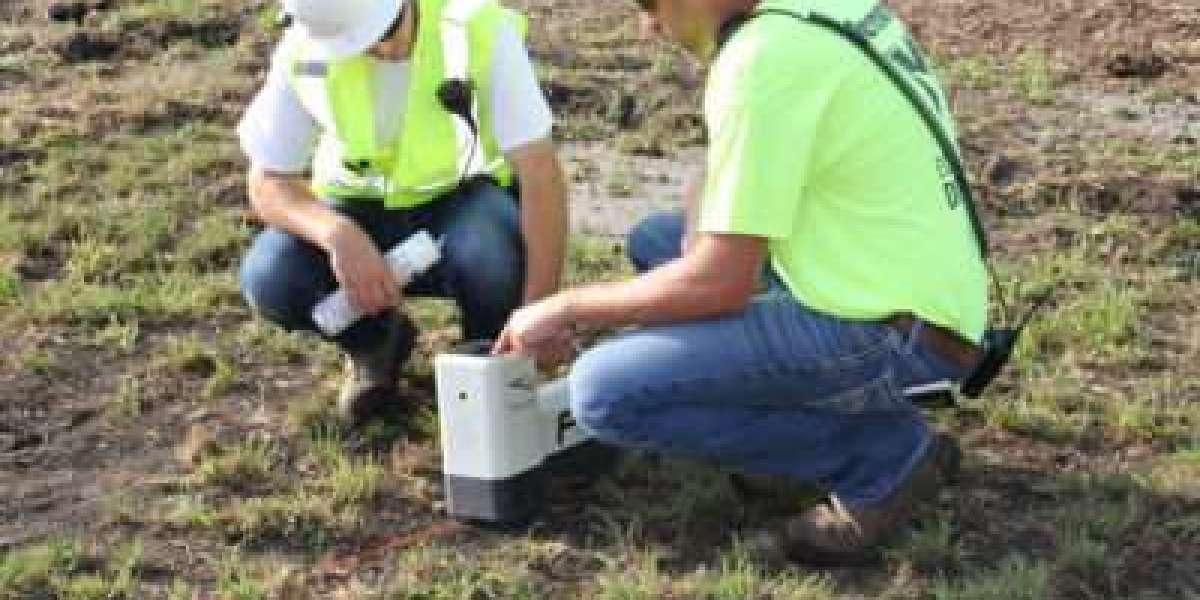In the world of underground construction and trenchless technology, precision is everything. One tool that plays a crucial role in ensuring accuracy during horizontal directional drilling (HDD) and other subterranean operations is the drill head locator. These devices have become indispensable for contractors and engineers working in utility installation, pipeline construction, and other underground projects. This guide aims to provide a detailed understanding of drill head locators, explaining what they are, how they work, their types, and the various applications and benefits they offer.
What Are Drill Head Locators?
Drill head locators are specialized electronic devices used to track the position and orientation of the drill head as it advances underground during a drilling operation. Since the drill head is hidden from direct view, accurate location information is critical to navigate around obstacles, maintain the correct drilling path, and ensure the utility line is installed in the precise location specified by project plans.
Without drill head locators, operators would have to rely on guesswork or less reliable methods, increasing the risk of costly mistakes such as hitting existing utilities or deviating from the intended path.
How Do Drill Head Locators Work?
Drill head locators typically operate by detecting signals emitted by a transmitter located inside or attached to the drill head. This transmitter generates electromagnetic signals that penetrate the soil and can be detected by a receiver held by the operator above ground. The receiver then interprets these signals to provide real-time data about the drill head’s depth, angle, and horizontal position.
Modern drill head locators often include sophisticated features such as:
Three-dimensional tracking: Allowing operators to visualize the drill head’s exact position in three axes—depth, lateral offset, and angle.
Digital displays: Offering clear and user-friendly interfaces that show precise measurements and alerts.
Data logging: Enabling recording of the drill path for project documentation and quality assurance.
Wireless communication: For remote monitoring and enhanced safety.
Types of Drill Head Locators
Drill head locators come in various forms, each suited to different types of drilling operations and environments. The most common types include:
1. Electromagnetic Locators
These are the most widely used drill head locators. They rely on the electromagnetic signals emitted by the transmitter in the drill head. Electromagnetic locators are reliable in a range of soil types but may face challenges in highly conductive soils such as clay or saturated ground, where signal attenuation can occur.
2. Gyroscopic Locators
Gyroscopic drill head locators use inertial navigation technology rather than electromagnetic signals. They measure the orientation and movements of the drill head internally using gyroscopes and accelerometers. This technology is beneficial in conditions where electromagnetic signals are weak or unreliable. However, gyroscopic systems can be more expensive and require careful calibration.
3. Sonar and Acoustic Locators
Some advanced systems use sound waves to detect the drill head position, although these are less common. These can be useful in specific situations where other signals cannot penetrate, but their use is limited by environmental noise and soil conditions.
Applications of Drill Head Locators
The primary function of drill head locators is to guide and monitor underground drilling operations. Their uses span a variety of industries and projects, including:
Horizontal Directional Drilling (HDD)
In HDD projects, drill head locators are essential for steering the drill along a predetermined path to install pipelines, cables, or conduits without disturbing the surface. This method is widely used for crossing roads, rivers, and other obstacles where traditional trenching is impractical.
Utility Installation and Maintenance
Drill head locators are critical in laying water, gas, electrical, and telecommunication lines. By providing precise location data, they help avoid damage to existing infrastructure and reduce costly repairs and downtime.
Environmental and Geotechnical Projects
In some cases, drill head locators assist in installing monitoring wells, environmental sensors, or sampling equipment underground, where precision placement is vital.
Oil and Gas Industry
Directional drilling in the oil and gas sector often requires accurate drill head tracking to navigate complex underground formations and maximize resource extraction efficiency.
Benefits of Using Drill Head Locators
Using drill head locators offers several significant advantages:
Increased Accuracy: They provide real-time, precise location data, reducing the risk of deviation and errors.
Enhanced Safety: Avoiding existing underground utilities helps prevent accidents, leaks, or service disruptions.
Cost Savings: By minimizing mistakes, the need for costly repairs and project delays is greatly reduced.
Environmental Protection: Trenchless installation reduces surface disturbance and environmental impact.
Project Documentation: Data logging allows for thorough records, which can be essential for regulatory compliance and future maintenance.
Key Considerations When Choosing Drill Head Locators
Selecting the right drill head locator depends on several factors:
Soil and Environmental Conditions: Different technologies perform better in certain soil types and moisture conditions.
Project Complexity: More advanced locators with 3D tracking and data logging are useful for complex or large-scale projects.
Budget: Balancing cost with necessary features is important to maximize value.
Ease of Use: User-friendly interfaces and reliable performance can improve efficiency on site.
Compatibility: The locator must be compatible with the drilling equipment and transmitters in use.
Challenges and Best Practices
While drill head locators are highly effective, operators must be aware of potential challenges:
Signal Interference: Metallic objects, electrical lines, and soil conductivity can affect signal strength.
Calibration Needs: Regular calibration ensures accuracy.
Operator Skill: Proper training is essential to interpret data correctly and steer the drill properly.
Best practices include conducting thorough site surveys, using backup location methods, and continuously monitoring the drill head position throughout the project.
Conclusion
Drill head locators are indispensable tools in modern underground drilling and utility installation. Their ability to provide precise, real-time tracking of the drill head enhances accuracy, safety, and efficiency across a wide range of applications. Understanding the different types of drill head locators, their operational principles, and the best practices for their use can help professionals select the right equipment and achieve successful project outcomes.






